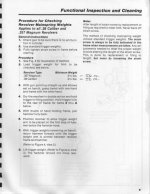Hairtrigger
Member
I just purchased a 629 Hunter second hand
I was very disappointed as it barely puts a dent in the primer. I pulled the grips and made sure the strain screw was tight. One or two out of 6 will fire. Tried different ammo. Same. I got the idea to pull the strain screw out of my 629 classic with a 5 inch barrel. I was very surprised to see there is a noticeable difference in length between the two screws.
The classic is a – five. The hunter is a – eight.
I was very disappointed as it barely puts a dent in the primer. I pulled the grips and made sure the strain screw was tight. One or two out of 6 will fire. Tried different ammo. Same. I got the idea to pull the strain screw out of my 629 classic with a 5 inch barrel. I was very surprised to see there is a noticeable difference in length between the two screws.
The classic is a – five. The hunter is a – eight.

